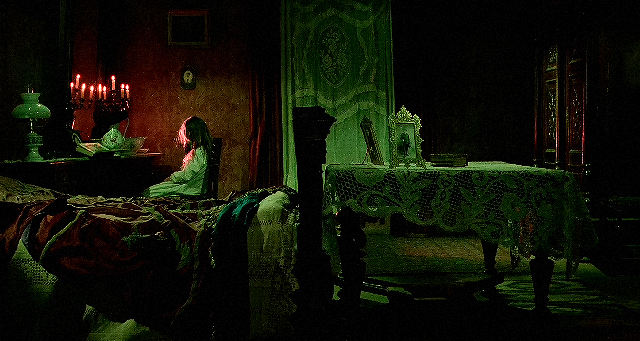
Robert Sigl’s film Laurin (1989) is a disturbing little fairytale film. The affective atmosphere and macabre foreboding that permeates every frame of Laurin render its themes of child abuse and death as a fantasia. Sigl’s approach is to investigate and interrogate the nature of the child predator through the lens of the fantastic. There are two perspectives in the film that are manifested cinematically with total subjectivity with regards to these characters. One of which is the titular protagonist played by Dóra Szinetár and the other is the antagonist, Herr Van Rees (Károly Eperjes).
Laurin literally opens as a point of view shot from the title character’s perspective as she peers through her telescope. In quick succession she spies all of Sigl’s primary visual signifiers. From here the mystery surrounding the death of Laurin’s pregnant mother, the disappearances of several children, and the return of Herr Van Rees all begin to take shape. Laurin’s narrative arc is the quest to solve the mystery of the disappearing children which in turn gives her emotional closure. When Van Rees is introduced all the way through to the film’s end he functions as a counter-perspective to Laurin as well as a counter-arc.
Each of these two characters is allowed a degree of fantasy which adds to the fairytale qualities of Laurin. The difference between the relationship these two central characters have with their fantasies is a matter of revelation versus denial. Laurin’s waking dreams and visions act as a portent that will aid her in stopping Van Rees. While on the other hand Van Rees’ visions obscure his involvement while at the same time suggesting a kinship between himself and other victims of abuse. Key images of black German Shepherds, a momentous kite, and a skull litter both characters’ visions and allows Sigl to connect their fantasies as if they are two different points in a cycle that forever remain an equal distance apart.
Laurin‘s milieu of early twentieth century rural Germany is evoked with tremendous power and urgency by the outstanding production design of Gizella Koppány and Edit Basilides. The visual potency of Laurin, of how Nyika Jancsó frames and lights the images, is almost entirely singular. The world of the film is so deliberately controlled by the filmmakers that not a single shot in the film feels extraneous.
Admittedly the premise to Laurin may not be the most original story ever put on him. However the stylized telling of this particular story is unique and affective enough that is stands out as one of the best examples. The more jaded cinephile would likely describe Laurin as a cross between Valerie And Her Week Of Wonders (1970) with Lady In White (1988). But this minimalist description misses the real purpose of the film which neither of these other two films share even if they are Laurin‘s aesthetic forebearers. Sigl’s purpose is to make a fairytale picture for children that deals with the very frightening realities that children face today.
